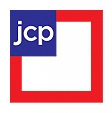J. C. Penney Company, Inc.
6501 Legacy Drive
Plano, TX 75024
972-431-1000
August 19, 2013
William H. Thompson
Accounting Branch Chief
Division of Corporation Finance
U.S. Securities and Exchange Commission
Mail Stop 3720
Washington, DC 20549
Re: J. C. Penney Company, Inc.
Form 10-K for the Fiscal Year ended February 2, 2013
Filed March 20, 2013
File No. 1-15274
Dear Mr. Thompson:
We are in receipt of your letter dated August 5, 2013, and have included our response to your comment below. The Company acknowledges its responsibility for the adequacy and accuracy of the disclosures in its filings. We further acknowledge that Staff comments or changes to disclosures in response to Staff comments do not foreclose the Commission from taking any action with respect to the filing, and that the Company may not assert Staff comments as a defense in any proceeding initiated by the Commission or any person under the federal securities laws of the United States.
For ease of reference, the heading and numbered paragraph below corresponds to the heading and numbered comment in the letter, with the Staff's comment presented in bold italicized text, followed by our response.
Item 6. Selected Financial Data, page 19
Non-GAAP Financial Measures, page 20
| 1. | We note your response to prior comment 2 in our letter dated May 28, 2013. We also note that you believe your non-GAAP adjustments are useful to investors, but do not state why. Please disclose why management believes the measure is useful to investors, as well as whether management uses the measure, and if so, how, as we note that: (1) the provision of a defined pension benefit to employees is within the company’s control, (2) the mechanics of pension accounting result in the smoothing of the various volatile components of pension cost into the income statement over a number of years, and (3) it is unclear how pension expense differs from other expenses that may be beyond the company’s control and/or volatile. |
Response:
J. C. Penney Company, Inc. has provided its employees with a non-contributory qualified pension plan (Primary Pension Plan) since 1966. The Primary Pension Plan was closed to new entrants on January 1, 2007. While the decision to continue to provide benefits under the Primary Pension Plan is within the Company’s control, the pension plan expense/(income) that the Company is required to recognize in its statement of operations is subject to volatility based on external market factors beyond the Company’s control, specifically the discount rate used by the Company to calculate the plan liability and the return on plan assets. Over time, this volatility has increased in absolute terms due to the increase in the size of the plan’s assets and liability. In calculating the expected return on plan assets for purposes of determining the amount of Primary Pension Plan expense, we use the fair value (mark-to-market) method to value plan assets. The fair value method, which is the Financial Accounting Standards Board’s (FASB) preferred methodology, results in greater volatility than the more commonly used calculated value method (referred to as the “smoothing of assets”) which allows companies to recognize changes in the fair value of plan assets in a systematic and rational manner over a period of not more than five years. As disclosed in Item 6 on page 19 of our Form 10-K for the fiscal year ended February 2, 2013, our pension expense for our Primary Pension Plan over the past five years was as follows:
| ($ in millions) | 2012 | 2011 | 2010 | 2009 | 2008 |
| Primary pension plan expense/(income) | $315 | $87 | $332 | $298 | $(133) |
Given the significant fluctuations in our Primary Pension Plan expense/(income) from year to year, we believe that presenting adjusted measures of operating income, net income and earnings per share that exclude pension expense/(income) provides users of our financial statements with a clearer picture of the true operating performance of the Company and assists investors in comparing our results of operations to the results of our peer companies. Similarly, management also uses these non-GAAP measures in its internal evaluation and analysis of the results of our core business operations.
Although other components of the Company’s cost structure may also be subject to volatility that is beyond the Company’s control, such as energy and raw material costs, management believes that such expenses have a direct impact on the Company’s ongoing core business operations. Accordingly, our non-GAAP measures of operating income, net income and earnings per share do not include adjustments for such items.
In response to the Staff’s comment, in future filings beginning with our 2013 second quarter Form 10-Q, we will include additional language in the description of our non-GAAP financial measures to clarify that we eliminate Primary Pension Plan expense in its entirety from certain non-GAAP financial measures to assist users in evaluating the performance of our core operations and increase comparability with our competitors.
* * * *
Should the Staff have any additional comments or need further information, please contact either Mark R. Sweeney, Senior Vice President and Controller, at 972-431-2202 or marks@jcp.com, or me at 972-431-1928 or ken@jcp.com.
Respectfully,
/s/ Kenneth H. Hannah
Kenneth H. Hannah
Executive Vice President and Chief Financial Officer
Cc: Myron E. Ullman, III
Mark R. Sweeney
Janet Dhillon
Salil R. Virkar
